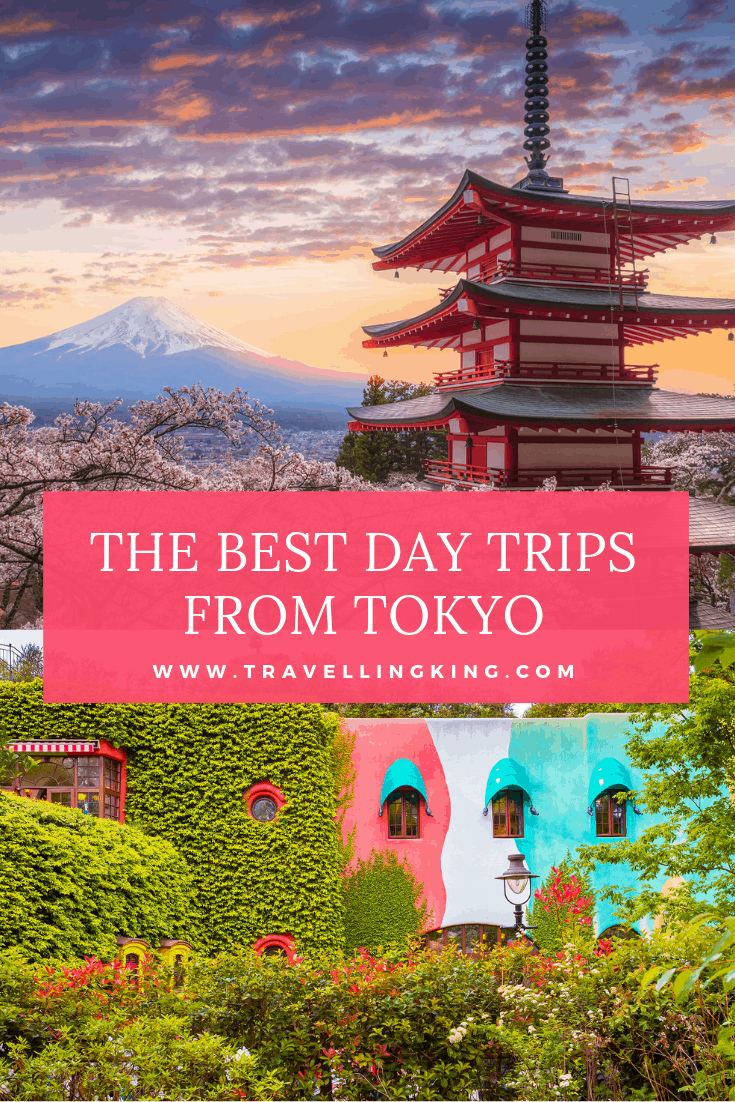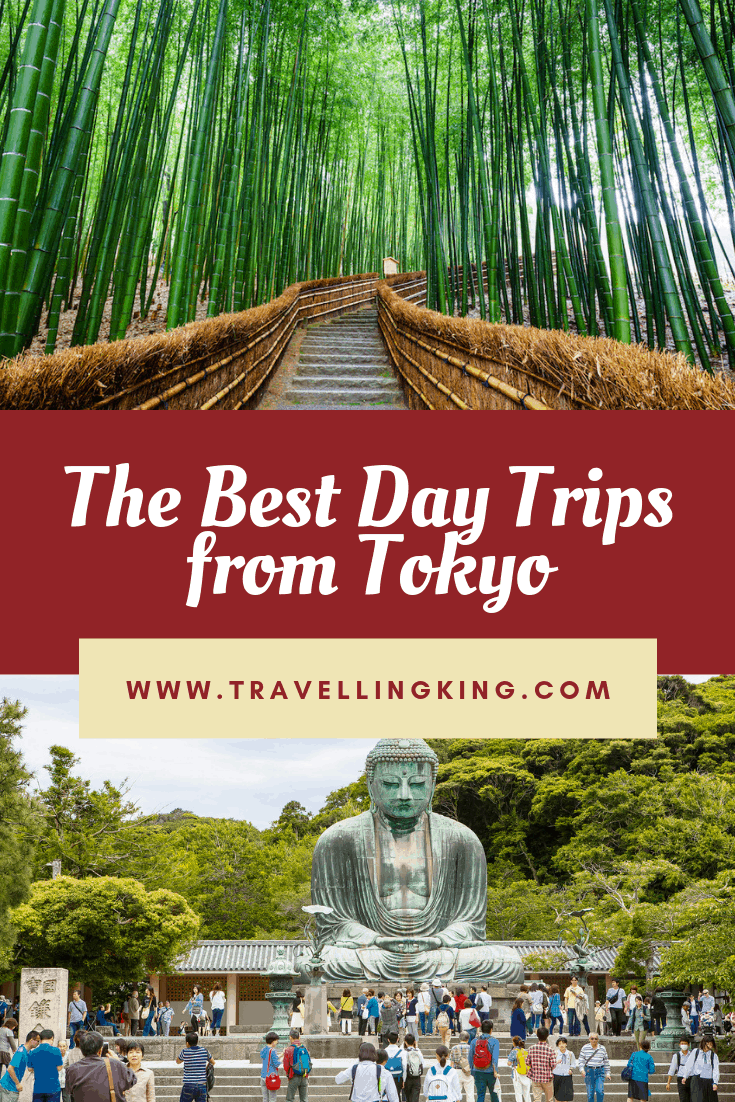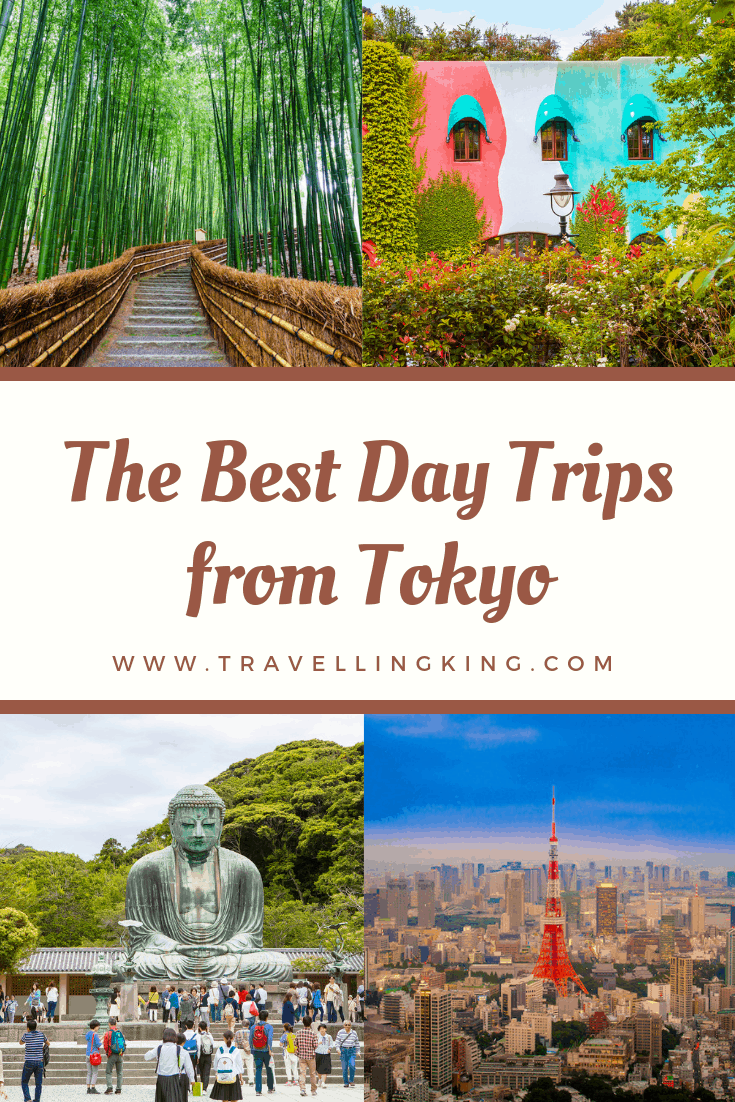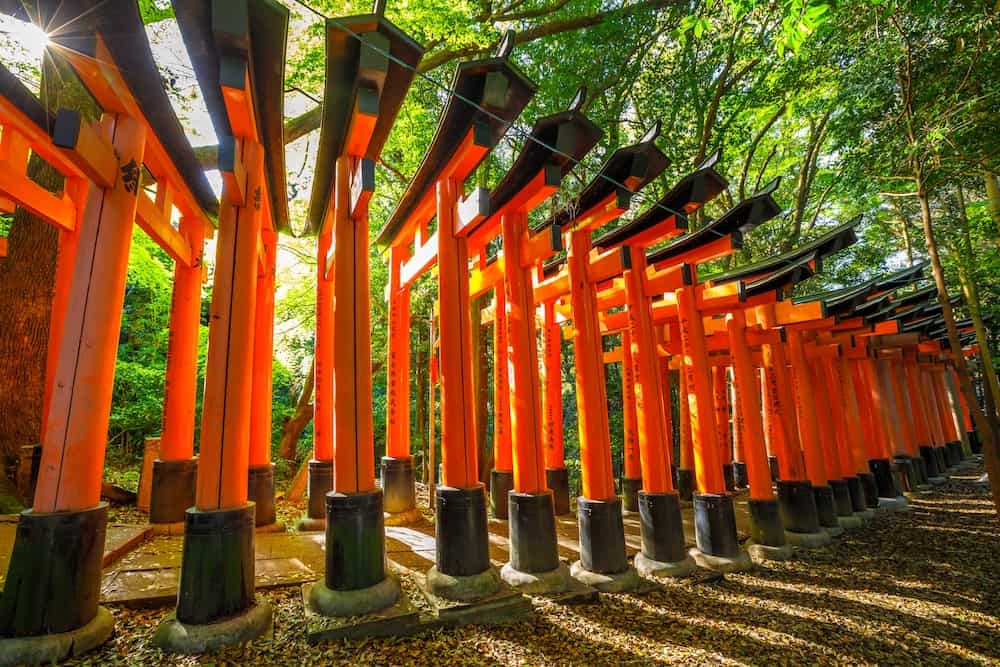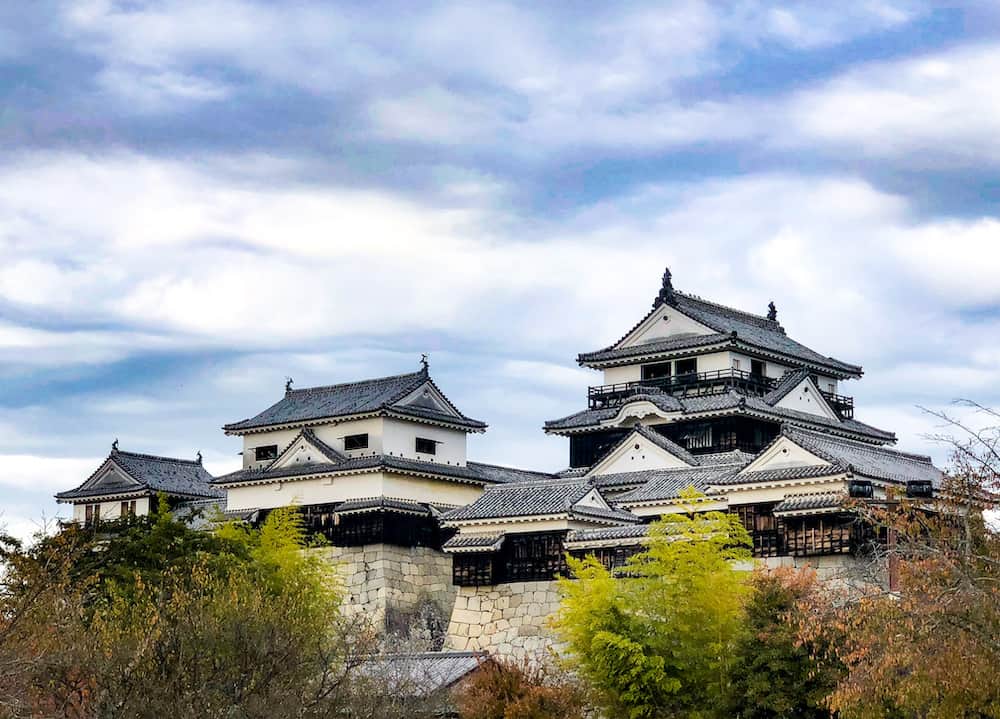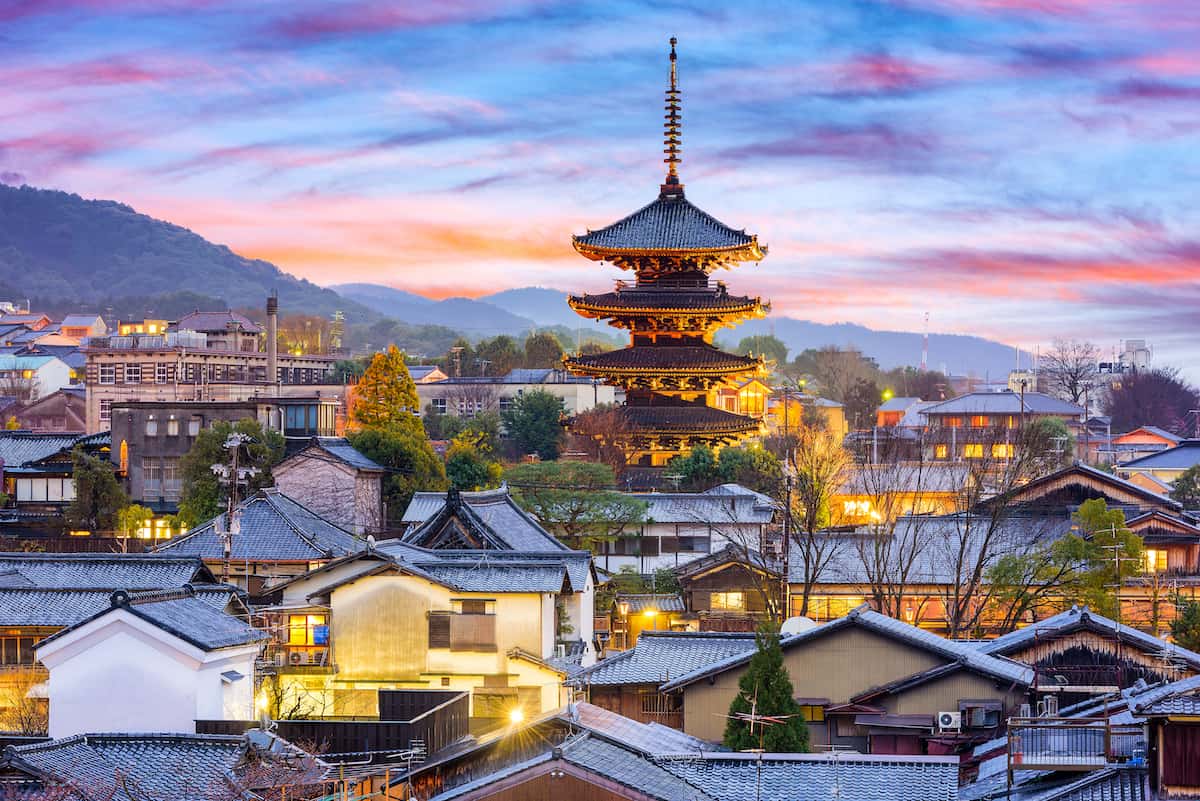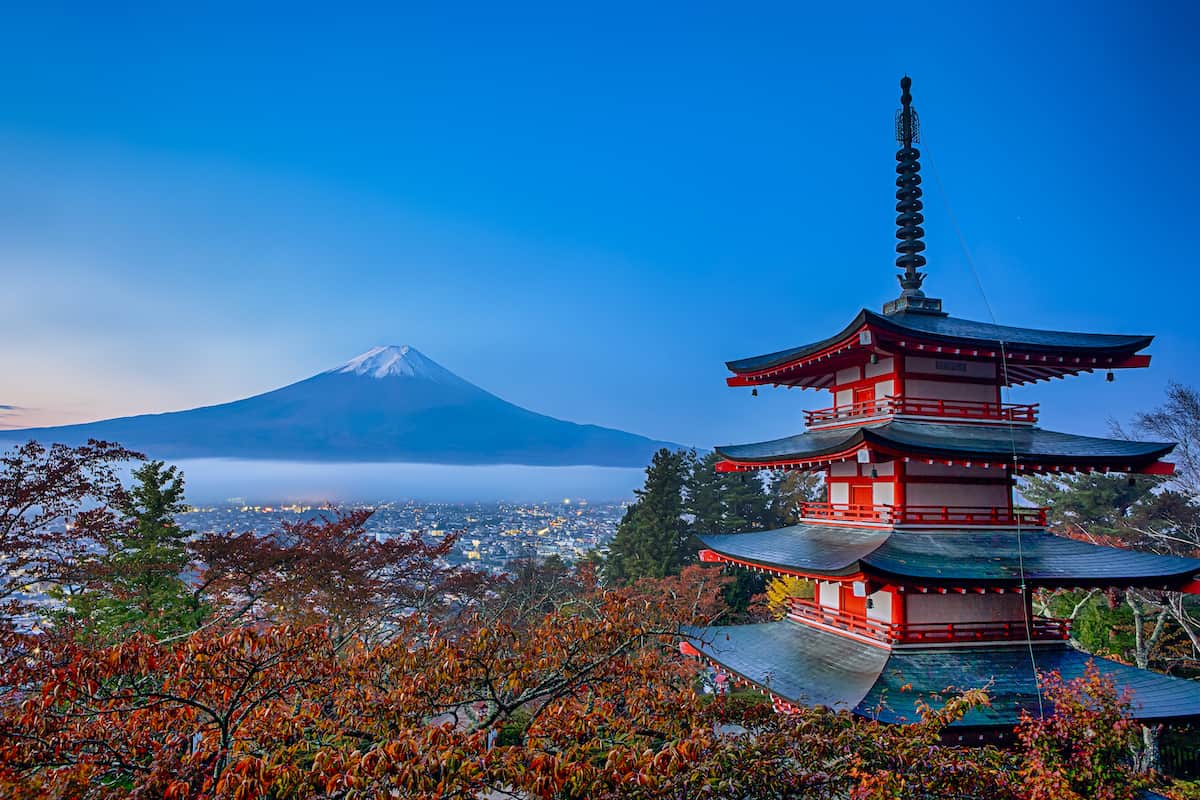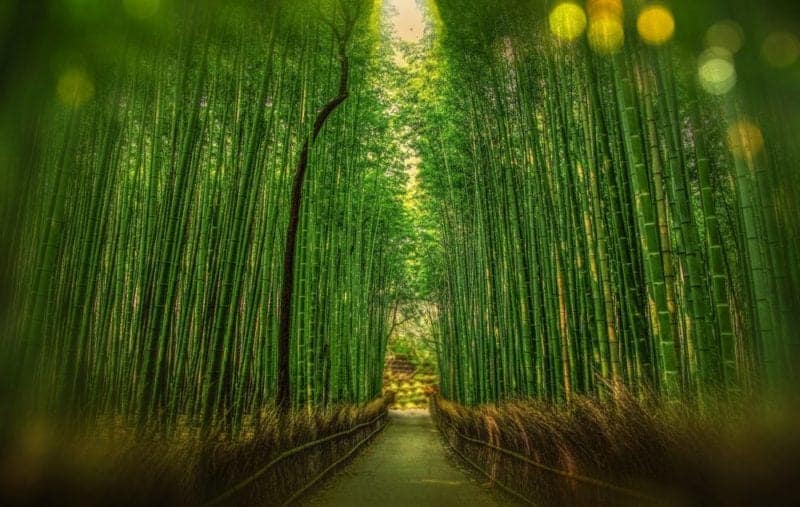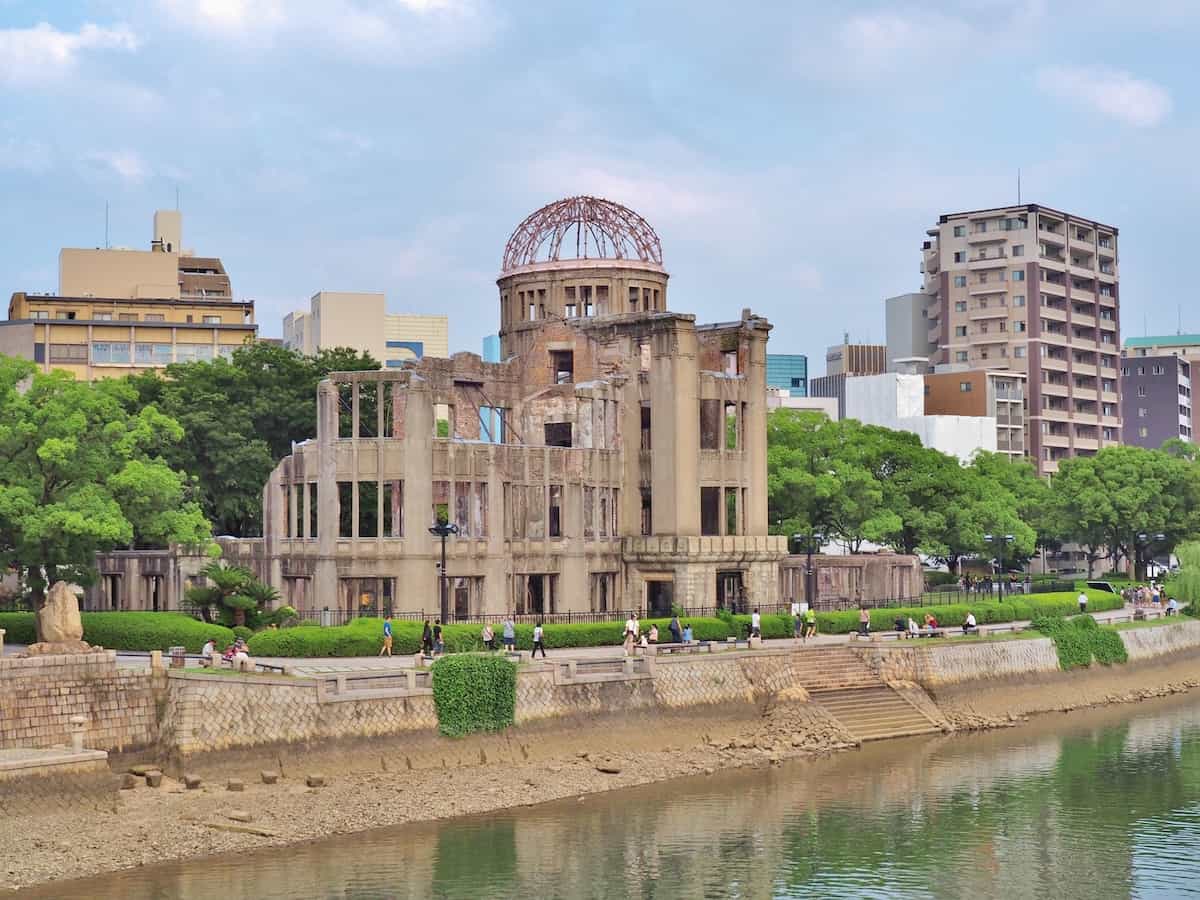The Best Day Trips from Tokyo
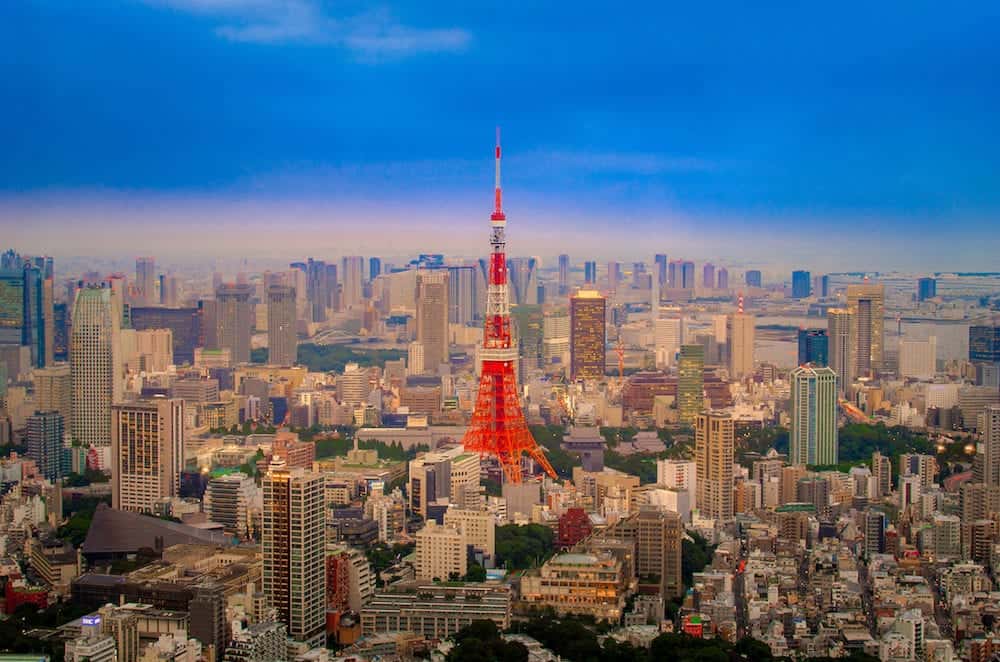
The Japanese capital is an extraordinary place where the old meets the new, high technology mingles with religious tradition, and even the most demanding visitors find new things to do and places to visit every day.
What you may not know is that Tokyo is surrounded by lesser known places, much different from the bustling capital, and nevertheless worth exploring! In this guide, we gathered the best day trips from Tokyo that include all from outdoor activities and entertainment to explorations of traditional and modern Japanese culture!
Plan your trip?
Avoid hidden fees in the exchange rate while withdrawing from millions of ATMs abroad, paying in restaurants and shops, and buying your accommodation and flights using the Wise Card. You can hold up to 40+ currencies at once to spend in in over 150 countries, and convert them in real time with the free Wise app.
Need help planning your trip from start to finish? Check out these helpful links:
- Cheap flights
- Savings on accommodation from hostels to luxury hotels
- Affordable car rental options
- Affordable sightseeing tours and day trips
- Travel Adapter – All in one so you don’t have to carry a bunch around
- Don’t be silly and forget Travel Insurance! Get hurt and you’ll regret it…
This post contains some affiliate links for your convenience. Click here to read my full disclosure policy. You can also read our content/editorial policy here.
Day Trip from Tokyo to Kamakura
Situated at the East end of the Sagam/Tokyo Bay, only 50 kilometres south from Tokyo, is the Kamakura city. The coastal town is mostly associated with the Great Buddha Statue, located in a very famous Buddhist temple of the Japanese Jōdo-shū.
The figure, 13.35 meters tall, made entirely out of bronze and with a weight of approx. 121 tonnes, can be both admired from outside and explored from within.
Since the statue is hollow, the visitors are encouraged to enter it and walk inside! The statue was built in bronze after its wooden precedent was damaged by a storm in 1248.
Light preservation and restoration work (like strengthening certain parts to make the figure more resistant to earthquakes), has been performed, but most parts date back to late 13th century!
Next point on your Kamakura itinerary should be the Tsurugaoka Hachimangū – the city’s most important, over 1000 years old Shinto Shrine. The Shrine grounds are quite vast, you can wander around enjoying the gardens, small lakes and fountains.
We also recommend a visit to the Engaku-Ji Temple. It is a very famous Japanese Zen Buddhist Temple. In 2012 it was proposed for UNESCO World Heritage List, but the request was turned down.
For a taste of the local culture, you can join one of the open meditations sessions that take place at Engaku-ji every morning. Another Zen Buddhist site in Kamakura is the Hōkoku-Ji housing a world-famous bamboo grove.
The bamboo garden is a great place for a relaxed walk or a short break from wandering around and sightseeing. Keep an eye out for a small tea house hidden behind the grove. The visitors can enjoy Matcha tea and local Japanese sweets for only 500 Yen (approx. 4,5 USD)!
Getting to Kamakura from Tokyo is easy and inexpensive. You will get to Kamakura Station for 920 Yen (approx. 8 USD) per person. Jump on a train (JR Yokosuka Line) towards Zushi – you will arrive at Kamakura after approx. 55 minutes.
You can also take the JR Shonan-Shinjuku Line. The price is the same, but the journey takes a few minutes longer. We recommend departing from Tokyo in the morning, aiming to arrive in Kamakura in the forenoon.
Start with a visit to the Great Buddha, treat yourself with a local lunch and in the afternoon you can either explore the other temples or make your way to the adjacent Enoshima Island, which happens to be the closest beach to the Japanese capital, making Kamakura an attractive destination for tourists and locals alike.
If you are looking for beach day trips from Tokyo, Enoshima would be a great pick, but bear in mind that the time will probably be too tight for both fun at the beach and thorough temple sightseeing in one day!
Kamakura and the Enoshima Island are both located in the Shonan Area, known as the Japanese surfers’ paradise and one of the most popular destinations for day trips from Tokyo in summer. If you are visiting Tokyo during the hot summer months, you should not only make a stop at Kamakura but try to explore other parts of Shonan as well.
Recommended Kamakura tours from Tokyo
- Exciting Kamakura – One Day Tour from Tokyo
- Half-Day Tour of Kamakura from Tokyo
- One Day Tour of Kamakura from Tokyo
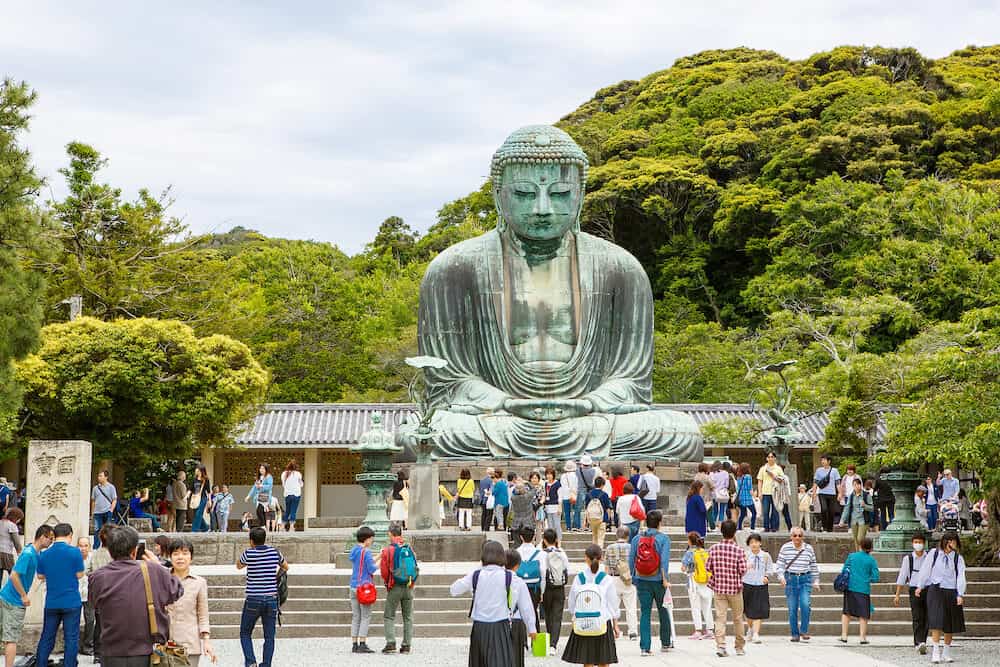
Day Trip from Tokyo to Mount Fuji
Mount Fuji is a Japanese national symbol – an image of the cherry blossoms and the Fuji Mountain in the background is probably, what most of us associate with Japan, which makes a trip to Fuji (which is actually not a mountain, but a volcano!) a must on your Tokyo-day trip itinerary.
Listed as a UNESCO World Heritage Site since 2012, Fuji has been a subject of many traditional Japanese poems, movies and inspiration for painters and Japanese woodblock print arts.
Fuji-San (as the Japanese call it) is not only an attraction for hiking and climbing enthusiasts though. (Even if your physical health does not allow you to climb the mountain, you can still consider paying a visit to Fuji.) People go there to calmly stroll around and explore the surrounding lakes, to enjoy hot springs, and even to shop!
Your Fuji Mountain itinerary will determine how to best get there. If you are interested to see and explore the lakes and the hot springs, we recommend you take the bus from either Shinjuku, Shibuya or Tokyo Main Station to either Kawaguchiko Station or directly to Lake Yamanakako. A bus ride from Tokyo to Lake Yamanakako will take approx. 2,5 hours for 2.100 Yen (approx. 19 USD) each way.
We suggest departing early in the morning, buses go throughout the whole day, but most departures are before noon. Now, the Kawaguchiko Station can also be reached by the new Fuji Excursion Limited Express direct train that departs from Shinjuku Station. The journey only takes 1 hour 52 minutes, but the cost is higher: 4,060 Yen each way (approx. 36 USD).
Fuji-climbers are recommended to begin the trek at the so-called “5th station”, which is the starting point of the popular “sunrise hike trail”. To reach the summit in time for the sunrise and experience the “arrival of light” (“goraiko” in Japanese), most hikers start their trek at night. In the climbing season (July through mid-September) there will be direct buses from the Shinjuku Expressway Bus Terminal.
This journey will also take 2.5 hours, but the cost will be 2.900 Yen each way (approx. 26 USD). Remember to take with you hiking shoes and warm (if possible, water-resistant clothes).
The temperature on Mount Fuji will be much lower than in Tokyo city, the humidity levels will be higher, making the slopes and stones slippery at times. Make sure you have appropriate clothing and the needed equipment (water and snacks, walking sticks, a flashlight etc.) for the hike.
Mount Fuji is also home to the popular Fuji Rock, a music festival that takes place every year in late July. It is a great opportunity to see some of the biggest international musicians in remarkable settings.
Recommended Mount Fuji tours from Tokyo
- Mt Fuji, Lake Ashi and Bullet Train Day Trip from Tokyo
- Mt. Fuji Day Trip Including Lake Ashi Sightseeing Cruise from Tokyo
- 1-Day Mt Fuji Bus Tour with Fuji Airways 4-D and Ninja Experience
- Mt. Fuji, Onsen Experience, and Outlets Shopping Day Trip from Tokyo
- 1 Day Private Mt Fuji Tour (Charter) – English Speaking Driver
- Mt Fuji and Hakone 1-Day Bus Tour return by Bullet Train (Shinkansen)
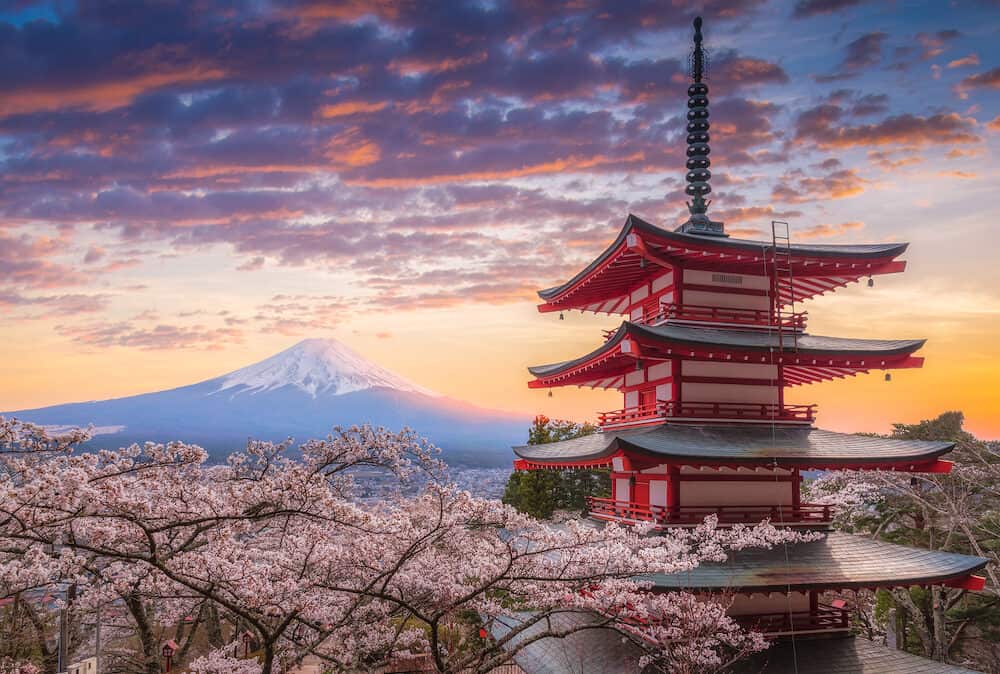
Day trip from Tokyo to the Fuji-Hakone-Izu National Park
We have already covered the most internationally well-known site of the Fuji-Hakone-Izu National Park, Mount Fuji, but other areas within this vast national park are also worth exploring! We recommend visiting the Izu Peninsula and the extending into the Pacific Ocean, Izu Islands often referred to as “Izu Seven” (“Izu Shichitō” in Japanese) as well as spending some time in the Hakone Area.
The Izu Peninsula is an extremely picturesque spot with many viewing points such as Koganezaki (Golden Cape) – famous for its beautiful sunsets or the Koibito Misaki (Lover’s Cape) with a special “Love Call Bell” that couples are supposed to ring together for a long and prosperous romantic relationship.
The Izu Peninsula is also well known for its “Onsen” (hot spring baths), many of which have an open-air location providing scenic views of the surrounding bays. Note that the Onsen are rarely open throughout the entire week. Tuesdays are popular resting days, so make sure to double-check the Onsen opening schedule before you go!
Each of the outlying Izu Islands is of a unique character. The largest, Izu Oshima is most well-known for Mount Mihara which is an active volcano. On the island, you will also find many hot springs as well as a museum dedicated to volcanos where you can learn about volcano structures, geography and even explosion patterns!
The smaller Izu Niijima has beautiful beaches and is a renowned surfing spot, and Izu Mikurajima is a popular spot for dolphin watching and scuba diving.
If you want to explore several of the Izu Islands in one day, we recommend you take a flight from Chofu Airport near Tokyo to Oshima Airport. You will have to pay almost 12.000 Yen (approx. 107 USD) each way, but you will arrive at Oshima in just 25 minutes! The trip will be much cheaper by ferry from Tokyo Takeshiba Ferry Terminal.
We do not recommend taking the regular ferries, as they take 6-8 hours to arrive at Oshima. The high-speed ferry services, on the other hand, take only around 2 hours, and the fee is 7500 – 8500 Yen (67 – 71,5 USD). During peak season there are several departures from Tokyo per day.
Another part of the Fuji-Hakone-Izu National Park, the Hakone Area, is mostly known for the Lake Ashinoko (also known as Lake Ashi), from where one can catch a stunning view of Mount Fuji.
The lake itself is very pristine, and its shores are mostly undeveloped which is why it is best viewed either from sightseeing boats or from a train on the Hakone Tozan Railway Line, often followed by a cable-car ride to Togendai (northern end of the Lake Ashi).
Recommended Fuji-Hakone-Izu National Park tours from Tokyo
- Mt Fuji and Hakone 1-Day Bus Tour by Bus
- Exciting Hakone – One Day Tour from Tokyo
- Views of Mount Fuji: A Day Trip to Hakone with a Local
- Private Custom Hakone from Tokyo with Pirate Ship Cruise
- Day Trip to Hakone from Tokyo Including Pirate Ship Cruise and Buffet Lunch
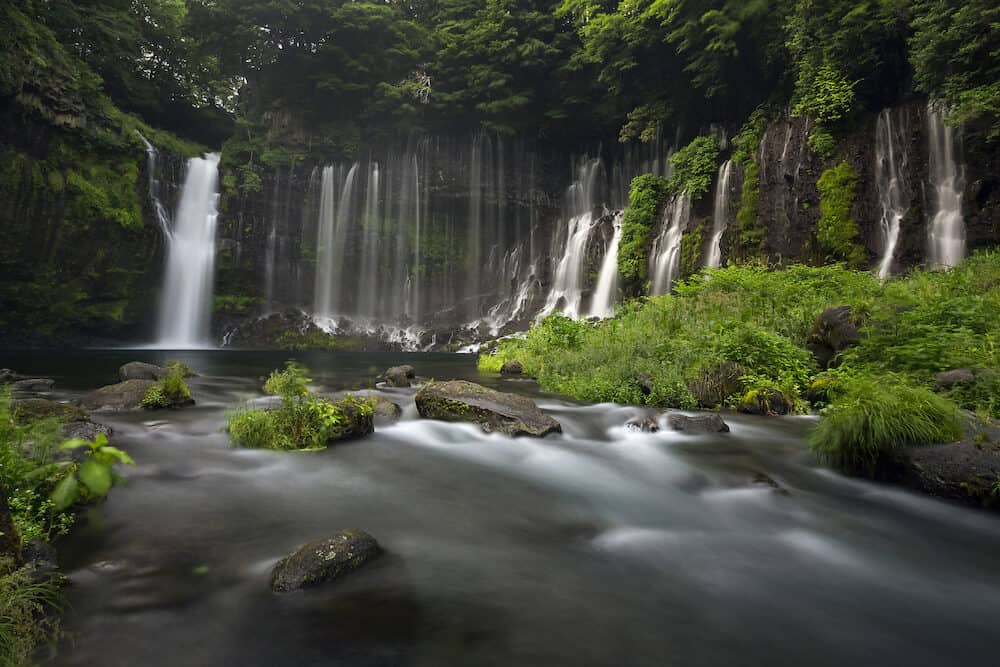
Day Trip from Tokyo to Ghibli Museum
Animated feature films are a big part of the Japanese culture, and Studio Ghibli’s anime movies have now gained worldwide recognition. Founded in 1985 by Hayao Miyazaki, Studio Ghibli is most famous for movies like “My Neighbour Totoro” and “Spirited Away” that have found their way into the hearts of an international audience. If you want to come closer to the mystical universe created in the Ghibli films, a visit to the Ghibli Museum is a must!
Located on the outskirts of Tokyo municipality, in the city of Mitaka, the museum was designed by Miyazaki himself.
He wanted to make sure that there was a resemblance between the museum and the film sets and based the composition of the museum on similar storyboards as the ones used for the movies, aiming to make the museum building a part of the overall exhibit. Furthermore, the design of the museum (as well as the name “Ghibli”) is influenced by Italian design and culture.
The museum showcases both permanent and temporary exhibitions – the latter change accordingly with Studio Ghibli’s newest releases or address trends in popular movie culture. A very attractive part of the museum is The Saturn Theatre, located in the museum basement.
With only 80 seats this original movie theatre showcases short animated feature films by Ghibli that are selected exclusively for the museum guests and cannot be viewed anywhere else.
The visitors are also invited to peek into the projectionist’s room to learn about how a movie runs through the projector. The cinema is vividly decorated with colourful flowers painted on the ceiling and walls and after each screening, there is a symbolic opening of the windows blinds and light is let into the projection room.
Usually, one film is selected to run throughout the whole month, and the screening schedule, as well as information about the projected movies, are available on the Ghibli Museum’s website.
Furthermore, the museum has a small tearoom that serves tea, coffee and light snacks (if you need a break from the maze-like museum corridors and gardens) as well as a souvenir shop with merchandise and unique, Ghibli-themed gifts.
Before going to the Ghibli Museum, make sure to book your ticket in advance! No tickets are sold at the museum, so remember to reserve it before your arrival. You can make an online reservation from overseas through the Museum’s website or through the Lawson Ticket digital services (when you purchase the ticket from abroad, handling fees will apply).
The tickets can also be purchased off-line in Lawson Convenience stores throughout Japan. This may be a good way to avoid service fees, but note that in Lawson Stores you can only buy a ticket for the following month, so this option is only valid if you are staying in Japan for a longer time!
Adult admission fee is 1.000 Yen (approx. 9 USD), children between 13-18 pay 700 Yen (6 USD), and between 7-12 400 Yen (3,5 USD). The museum is open from 10 am – 6 pm, every day except on Tuesdays and major holidays like New Year’s.
Getting to the Ghibli Museum from Tokyo is fairly easy; take the JR Chuo Line from Shinjuku Station. After 20 minutes you will arrive at Mitaka Station, from where you can either follow the signs and walk to the museum (the walk will be approx. 15 minutes).
Additionally, you can find a printer friendly version of a Mitaka Station – Ghibli Museum map on the museum website. Shuttle buses from Mitaka Station to the museum are also available for 350 Yen (approx. 3 USD) for a round trip.
Recommended Ghibli Museum tours from Tokyo
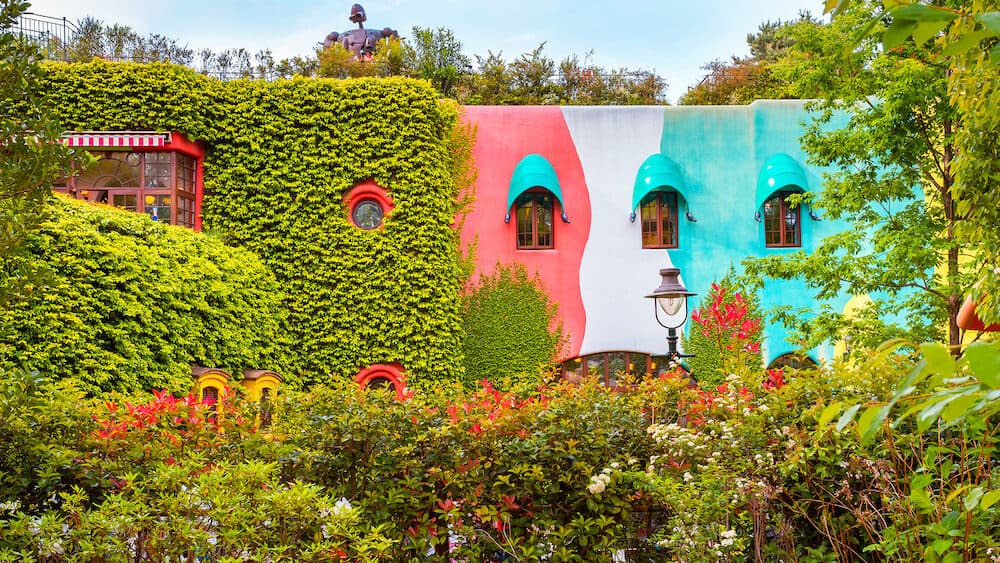
Day Trip from Tokyo to Tokyo Disney Resort
One may wonder how the two giants: Studio Ghibli and Disney can both thrive in Japan, but one thing is certain – Tokyo Disney Resort (consisting of Tokyo Disneyland and Tokyo DisneySea) is a great attraction, popular among both tourists and locals!
The magical world of Walt Disney with amusements, shows, performances and much more is open to visitors every day from 9 am until 10 pm (to make sure there will not be any changes to the opening times, you can always double-check the opening hours on Tokyo Disneyland’s website). Note that a special show calendar is on for holidays like Easter, Christmas or the New Year’s!
You can purchase day-passes online for the price of 7,400 Yen (approx. 66 USD) for an adult ticket, 6,400 Yen (approx. 57 USD) for a junior ticket and 4,800 Yen (approx. 43 USD) for child ticket respectively.
You can choose whether you want to buy a fixed-day ticket or an open-ticket (if you are not sure which day on your Japan trip you wish to visit the amusement park), but bear in mind that open-ticket holders may be denied entrance if park admission is being restricted.
Tokyo Disney Resort is only 15 minutes by train from Tokyo Station. You can take the Japan Railway (JR) Keiyo or Musashino Line and get off at Maihama Station from where you can either walk or onboard the Disney Resort Line – a monorail that circles the resort, connecting JR Maihama Station and key points within the Disney World.
Recommended Tokyo Disneyland tours from Tokyo
- Tokyo Disneyland Disneysea Ticket and Hotel Package
- Disneyland Tokyo to or from Main Tokyo Private Transfer Hiace bus for pax1-9
- Tokyo Disneyland or DisneySea Private Return Transfer – English Speaking Driver
- Disneyland or Disneysea 1-Day Passport Ticket and Private Transfer from Tokyo
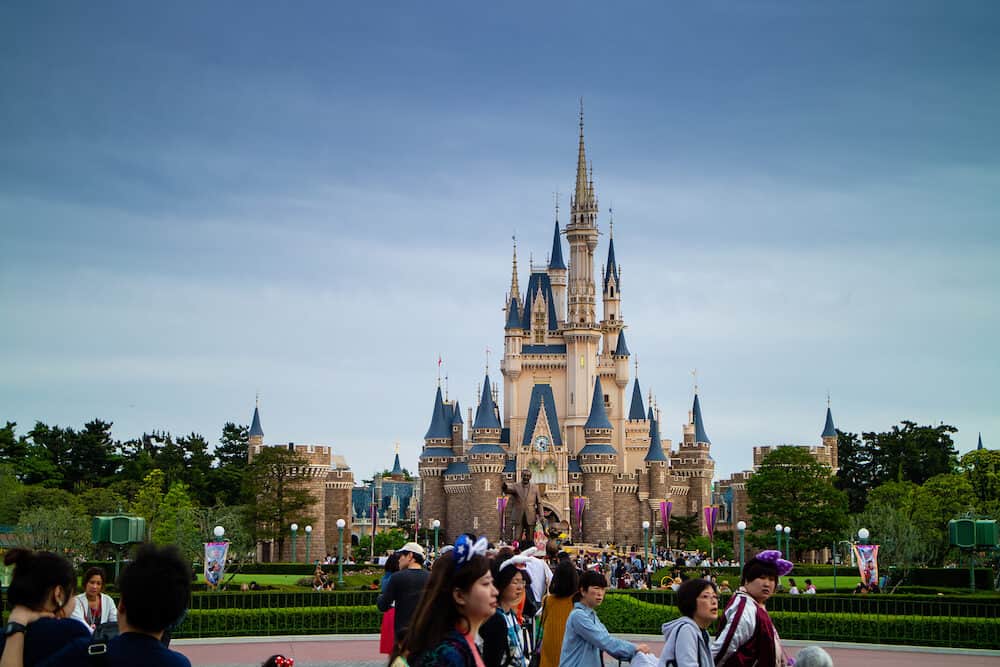
Day Trip from Tokyo to Kyoto
A trip to Kyoto is one of the most popular day trips from Tokyo by bullet train. Kyoto that used to serve as the Japanese capital for a period of more than 1000 years, is tempting tourists with its unique atmosphere, created by the many shrines, temples and other historical structures, well preserved within the city.
Kyoto is referred to as “the city of tradition”, so prepare for an experience much different from the bustling metropolis of Tokyo!
Kyoto’s religious and cultural sites are countless, but the Kinkakuji (Golden Pavilion) is unarguably one of the top picks! The Golden Pavilion is a Zen Temple with top two floors covered with gold leaf. Observe how the sun rays reflect in the gilded walls, as you wander around the building and its adjacent lake.
The Kinkakuji itself has been rebuilt several times, most recently in the 1950s after an extremist monk set the structure on fire! Another stunning site is the Ginkakuji (Silver Pavilion). It was built a few decades after the Golden Temple and it is situated on the other side of the city.
Unlike the Golden Pagoda, the Ginkakuji was never coated with silver, rather it got its name because of its dark exterior in which the moonlight reflected at night.
Another worthy mention is the Tofuku-Ji Temple in Southeast Kyoto. With its spacious grounds, it is one of the less crowded Zen temples. It is especially beautiful during Autumn, famous for its incredible sights of the colour-changing maple leaves. On the pagoda grounds, you will also find the Sanmon Gate. It is 22 metres tall and dates back to 1425.
Behind the gate, you will find a 1934-reconstruction of the old Hondo (main hall). For the specific opening hours of each temple (that tend to vary with the season) we recommend double-checking online, prior to your arrival in Kyoto. Note that if you choose to visit during Japanese holidays, the temple grounds may be very crowded.
When taking the Shinkansen, you can travel the distance of 450 kilometres between Tokyo and Kyoto in just 2 hours and 20 minutes (with Nozomi, the fastest Shinkansen train available); prepare for a 20-minutes longer journey if you take the Hikari Line Bullet Train.
The price difference is quite insignificant – 13,800 Yen (approx. 123 USD) for Hikari instead of 14,110 Yen (around 126 USD) for the Nozomi. If you are a holder of Japan Rail Pass (a special, time-limited pass that can only be purchased from abroad, prior to your arrival in Japan, that allows unlimited travel on Japan Rail trains) the Hikari Line trains will be covered by the travel pass.
Recommended Kyoto tours from Tokyo
- Kyoto Rail Tour by Bullet Train from Tokyo
- 3-Day Mt Fuji, Kyoto and Nara Rail Tour by Bullet Train from Tokyo
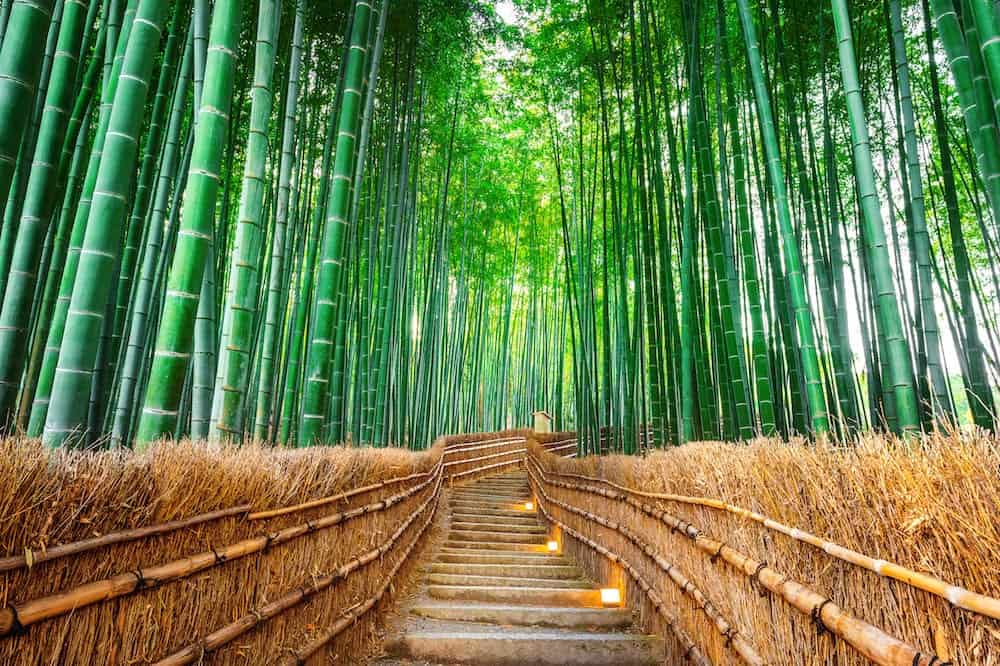
Day trip from Tokyo to Yokohama
Located less than 30 minutes south of the Japanese capital by train, Yokohama is a popular destination for day tours from Tokyo. In the 19th century, Yokohama’s port opened to foreign trade, and the mere fishing village grew rapidly. It has now become Japan’s second-largest city!
Yokohama is favored by expats, and hence one of the most popular city attraction is its bustling Chinatown! Enter the “little China” filled with colourfully decorated shops, street stalls selling traditional Chinese snacks like roasted chestnuts and indulge in Chinese dishes served at the many traditional Chinese restaurants. The difference between the Japanese and the Chinese part of the city is striking!
Another popular spot in Yokohama, visited by tourists and locals alike, is the Osanbashi Pier. The pier is a working terminal for international passengers from cruise ships docking in Yokohama, but it is also one of the city’s best spots for a walk. The pier itself is 400 meters long, surrounded by green spaces and a network of neatly maintained alleyways.
It is also one of the best spots from where you can admire the skyline of Minato Mirai (Yokohama’s new city centre). After your stroll around the pier and its adjacent areas, we suggest you go below the walking area to check out events and exhibition halls in the boarding area or grab a bite at one of the Osanbashi restaurants.
You may not realize that Yokohama is also home to some very quirky museums! If you are a fan of noodle dishes, we are sure you will be curious to check out the “Cup Noodles Museum” or the “Ramen Museum”.
The institutions are dedicated to instant hot-pots and the popular Japanese noodle dish, respectively. Aside from telling the history of ramen noodles in Japan (the dish was originally introduced by the Chinese) the Ramen Museum houses nine ramen restaurants! Each of them is dedicated to a ramen dish from a different region of Japan.
If you think that nine portions of ramen sound like a lot, do not worry! You can ask for the so-called “mini ramen”, small servings of the signature dishes to have an all-around taste of the Japanese noodles.
If you happen to be thirsty after nine bowls of ramen, remember that Yokohama also houses the popular Kirin Brewery Company where fun brewery tours are available for the visitors. A true taste of the local culture!
The fastest and most convenient way to get to Yokohama from Tokyo is by train. You can choose between JR Tokaido Line, Yokosuka Line of the Narita Express and depart from either Ueno Station, Tokyo Station or Shinagawa Station, and if you have the Japan Rail Pass, remember that all JR connections are covered by the travel pass!
Recommended Yokohama tours from Tokyo
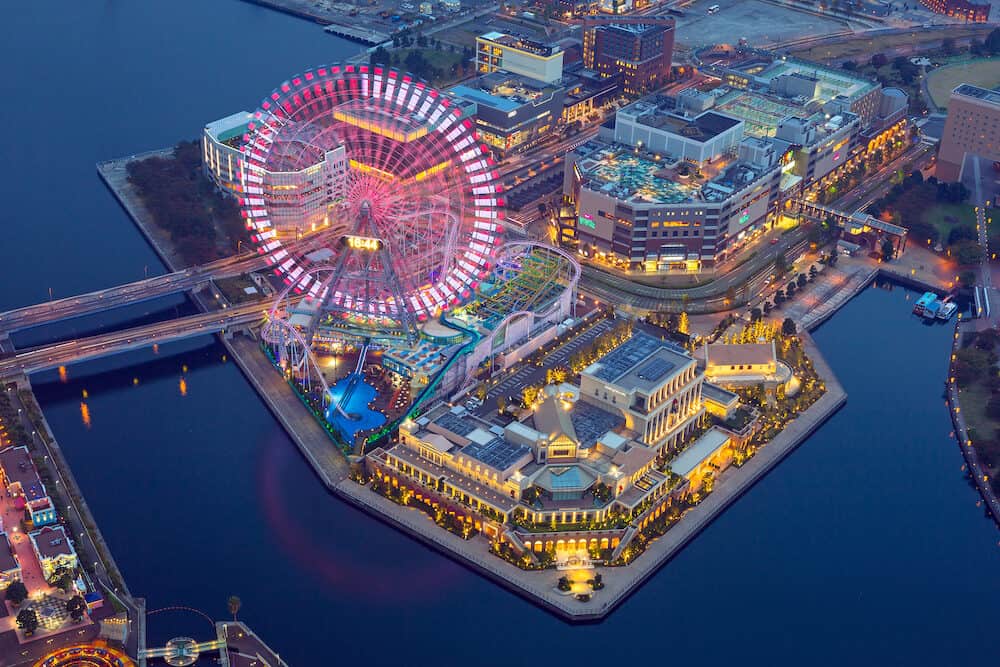
Recommend Day trips from Tokyo
- Mt Fuji, Lake Ashi and Bullet Train Day Trip from Tokyo
- Mt. Fuji Day Trip Including Lake Ashi Sightseeing Cruise from Tokyo
- Kyoto Rail Tour by Bullet Train from Tokyo
- Nikko National Park Day Trip from Tokyo
- Tokyo Studio Ghibli Museum and Ghibli Film Appreciation Tour including Lunch
- Mt Fuji and Aokigahara Forest Day Trip from Tokyo
- Viator VIP: Mt Fuji Private Tour with Sengen Shrine Visit from Tokyo
- See Snow Monkeys on a Private Day Trip from Tokyo by Bullet Train
- Best of Edo Japan: Nikko National Park and Edo Wonderland Day Trip from Tokyo
- One Day Tour of Kamakura from Tokyo
- Hitachi Seaside Park & Ashikaga Flower Park
If you’d like to save it for later, please save it to Pinterest.
